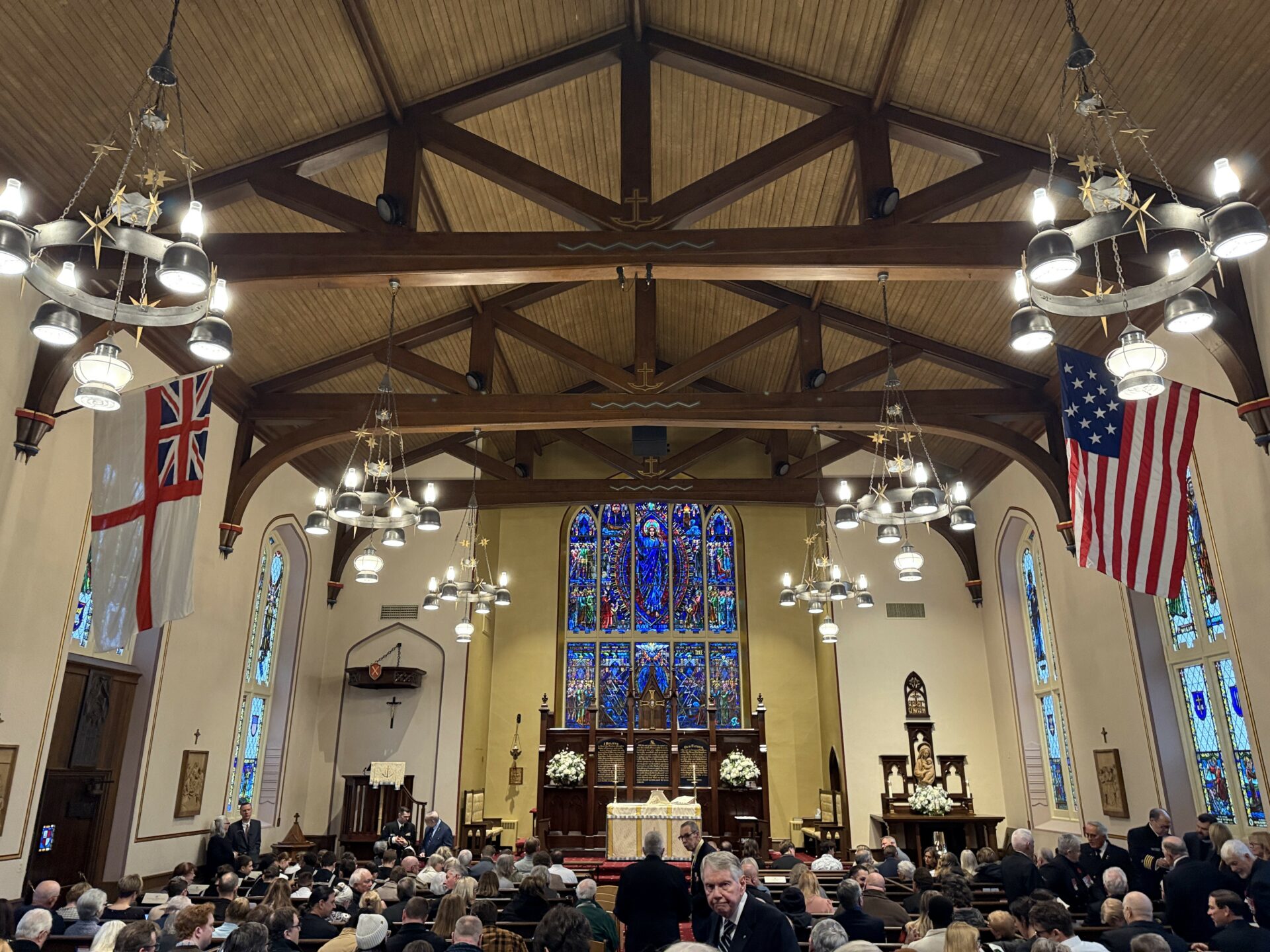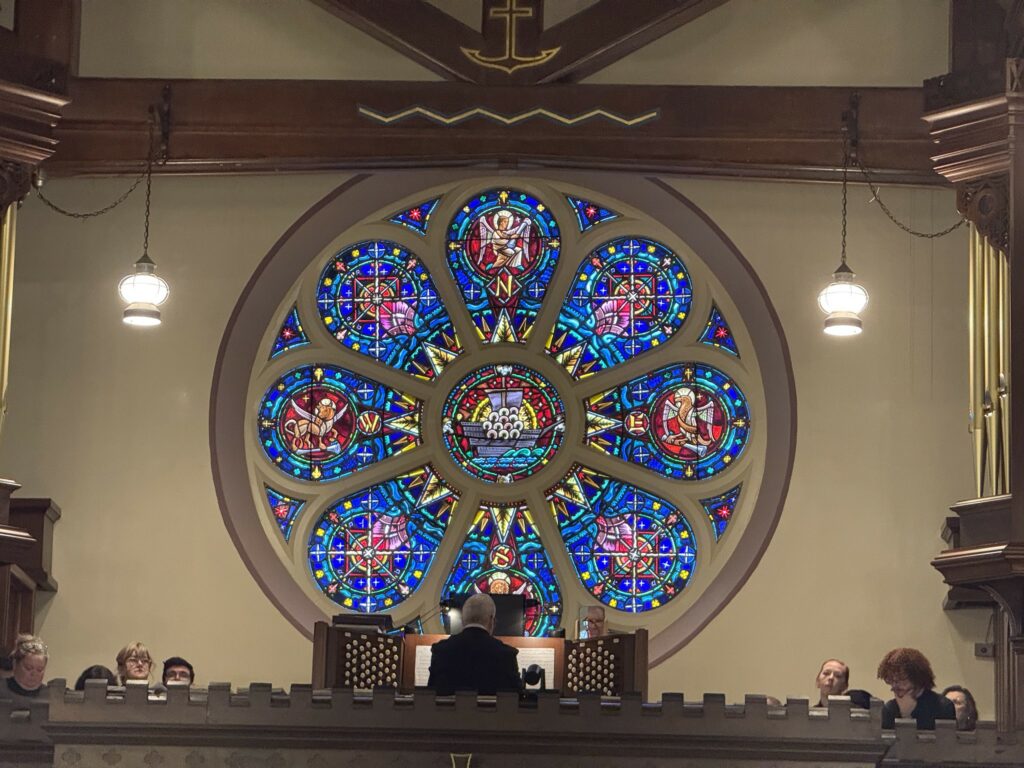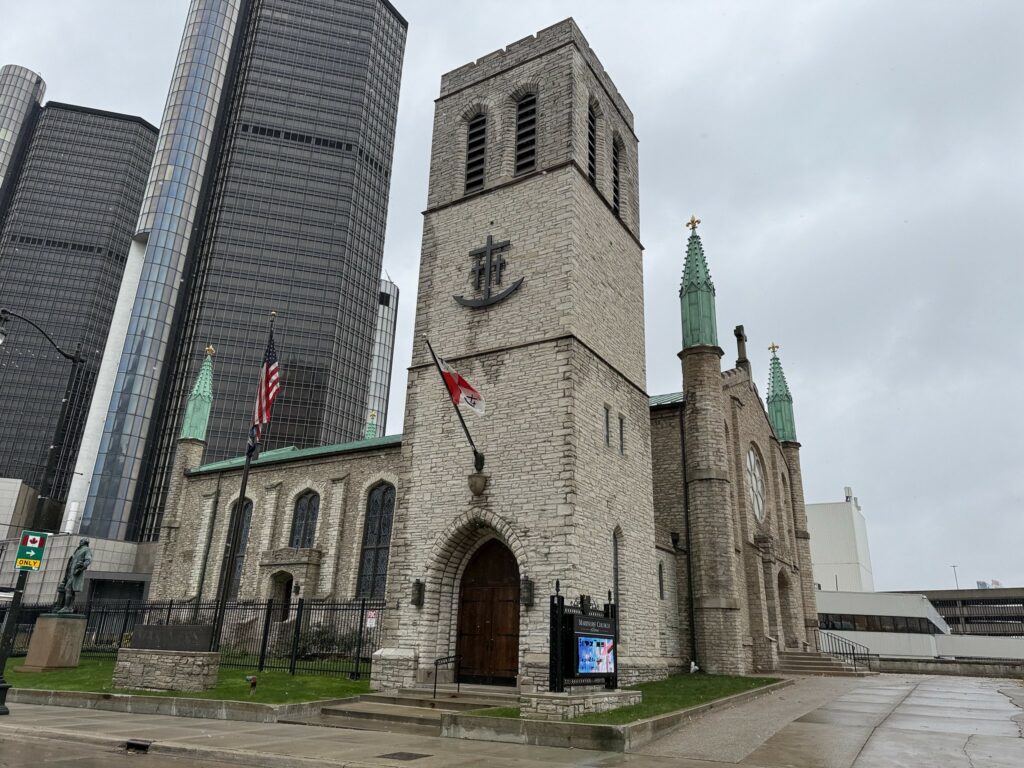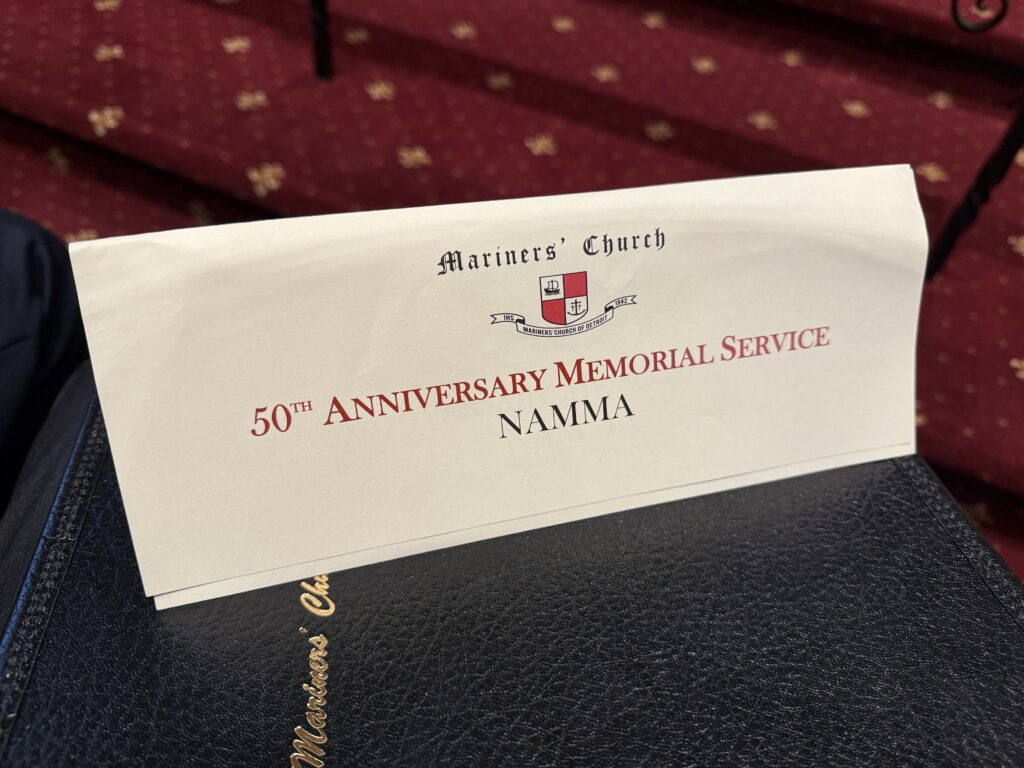Remembering the Edmund Fitzgerald: Fifty Years On at Mariners’ Church

On November 9, 2025, the Mariners’ Church of Detroit gathered for a solemn and moving service to commemorate the 50th anniversary of the sinking of the Edmund Fitzgerald. The official anniversary fell on November 10, 2025—fifty years since that fateful night in 1975 when the mighty ore carrier vanished beneath the waves of Lake Superior, taking with her all 29 crew members. The tragedy remains one of the most haunting chapters in Great Lakes maritime history, and every year since, Mariners’ Church has kept faith with its calling to remember those lost at sea.



Founded in 1842, Mariners’ Church was built through the bequest of Julia A. Anderson, who, with funds also from her sister Charlotte, sought to create a permanent sanctuary for mariners. From its earliest days, the church was intended as a refuge for those who lived and worked on the Great Lakes, offering spiritual comfort to sailors far from home. It stands today as an independent congregation in the Anglican tradition—faithful to its maritime roots and its mission to serve seafarers.
The church’s unique place in maritime lore was forever sealed in November 1975. When news reached Detroit that the Edmund Fitzgerald had been lost, the then-rector, Rev. Richard Ingalls, instinctively rang the church bell 29 times—once for each life lost. That act of remembrance became immortalized a year later in Canadian singer Gordon Lightfoot’s song The Wreck of the Edmund Fitzgerald, whose final verse evokes the “musty old hall in Detroit” and the “mariners’ maritime cathedral” where “the bell chimed thirty times for each man on the Edmund Fitzgerald.” Though the church is neither musty nor a cathedral—it was renamed in 2010 as “the rustic old hall”—Lightfoot’s song linked the church permanently to the memory of the ship and her crew. Every November since, the bells of Mariners’ Church have tolled in their honor: 29 times for the men lost, and once more for all seafarers who have perished on the Great Lakes.
This year’s 50th anniversary service was particularly poignant. The sanctuary was filled to capacity, with many family members of the lost crew among those in attendance. The service began with the hymn “Eternal Father Strong to Save”, followed by the national anthems of both the United States and Canada, reminding all present that the Great Lakes bind together two nations through a shared maritime heritage. Scripture was read, prayers were offered, and as each sailor’s name was spoken aloud, family members stepped forward to ring the great bronze bell. For those without surviving family, others—fellow mariners, clergy, and guests—took up the task. Among them was Dr. Jason Zuidema of the North American Maritime Ministry Association (NAMMA), who was honored to ring the bell for one of the men remembered that morning.
Outside, a light snowfall marked the changing of the season. Just a day before, a Canadian lake freighter had run aground in the Detroit River only a few hundred yards from the church—a sobering reminder that even in our modern age, the Great Lakes remain unpredictable and dangerous. The snow, the cold wind, and the sight of the ice forming on the river gave the day a tangible sense of November’s perils—those same conditions that doomed the Fitzgerald half a century ago.
Following the memorial, Rev. Todd Meyer, the current rector of Mariner’s Church, hosted a special presentation by Dr. Zuidema on the mission and vision of the modern maritime ministries that are members of NAMMA. His address traced the long and distinguished history of Mariners’ Church alongside other seafarers’ missions across North America. He reminded attendees that Mariners’ was founded as a maritime Bethel in the 19th century—and could again take up a more active role in port welfare today. Though the church excels in remembrance and maintains a living link with its maritime past, it currently lacks an ongoing seafarers’ outreach presence in the Port of Detroit. With roughly 500 ship movements per year, including both cargo vessels and cruise ships docking within sight of the church, the potential for renewed ministry is significant.
The conversation following the presentation was lively and hopeful. There was a sense among those gathered that this 50th anniversary could mark not only a moment of remembrance but also one of renewal. As Dr. Zuidema suggested, the living might best honor the dead by reviving the church’s founding purpose—to serve the men and women who still work the inland seas today. To renew port-based seafarers’ welfare in Detroit would be to carry forward the spirit of Julia Anderson’s 1842 vision and to ensure that Mariners’ Church continues to stand as both a memorial and a mission.
In the glow of the church’s stained glass and under the sound of the tolling bell, the Edmund Fitzgerald’s story once again found its echo—among mariners, families, and all who cherish the memory of those who go down to the sea in ships. Fifty years after the storm, the Great Lakes’ most famous shipwreck still calls us to remember, to give thanks, and to serve.
Read the history of Mariners’ Church in Created for the Ages: Mariners’ Church of Detroit. 2001.